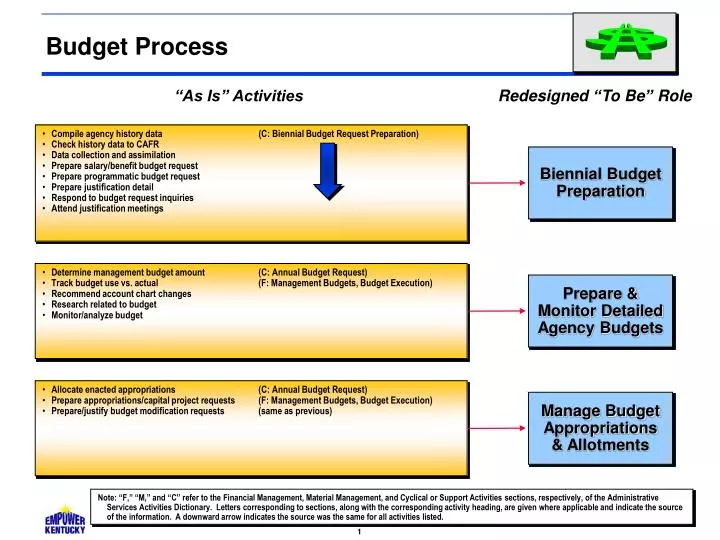

Some use flexible budgets to evaluate managerial performance while others compare results against original estimates. Some revise their budgets quarterly and others never change them. Some companies use a top-down and others a bottom-up approach in budget preparation. In preparing a budget, a company can proceed in a number of different ways. Such a document is a central part of the management control system of many companies. But generally when the term budget is used, it refers to an operating budget containing an organization’s detailed revenue and expense accounts grouped either by operating units, such as divisions or departments, or by products and product lines. Human resource or “headcount” budgets (the capital budgets of service companies) serve as means of control in labor-intensive companies. Cash budgets are especially important to new and growing businesses, whereas capital budgets are widely used if capital expenditures are important and recurring. A budget, on the other hand, involves a commitment to a forecast to make an agreed-on outcome happen.īudgets come in several variations. A forecast is a prediction of what may happen and sometimes contains prescriptions for dealing with future events. 1 Large companies tend to use budgets mostly for control and smaller entrepreneurial companies use them primarily as planning tools.īut no matter whether it is used for planning or for control, a budget is more than a forecast. More commonly, companies use the same document for both purposes.

Occasionally a company uses a budget with “stretch” in it for motivating performance-sales, for instance-and a more “realistic” budget for planning-expected sales, for example. And when I ask, “Which would be best for motivating performance?” the majority of participants usually select Budget 2.Īs this example shows, budgets can be used both for planning (Number 1) and for control (Number 2), although the same budget is not always optimal for both purposes. These opposing views come together when I ask, “Which would be best for borrowing money on a one-loan-a-year basis?” In this case, the choice is almost always Budget 1. A minority, however, hold out for Budget 1, which seems to them the “most reasonable.” Most class participants eventually choose Budget 2 after being assured of equal results. Then I ask the class, “Which budget is better, assuming in both cases that the manager gets the job done in time, that the end result is the same quality of performance and customer satisfaction, and that the manager doesn’t develop ulcers in the process of implementation?”Ī heated argument usually follows. I start my classes on budgeting by displaying two situations on the blackboard: Whatever the focus, budget preparation and implementation are important in carrying out company strategy and in professionalizing the smaller company. He concludes that large companies concerned about operational efficiency should focus on the coordination and control aspects of budgeting while small and innovative companies should be concerned with planning aspects. These include the initiation process, implementation, the period covered, whether the budget should be fixed or flexible, and how it should be used to evaluate performance. Managers must decide which function is more important and then resolve a number of formulation issues. He views them as having two primary functions: planning and control. While not disagreeing that targeting is important, Neil Churchill maintains that budgets should be considered from a broader perspective. Growing Concerns presents a view of budgeting in this issue of HBR different from that presented in the May–June issue by Jerry Viscione, who argued that managers of small ventures must pay particular attention to the targets they set when formulating budgets. This wasteful way of using budgets overlooks important managerial objectives that budgeting can help achieve. And that is what budgets are like for many smaller businesses. The term “budget” tends to conjure up in the minds of many managers images of inaccurate estimates, produced in tedious detail, which are never exactly achieved but whose shortfalls or overruns require explanations.


 0 kommentar(er)
0 kommentar(er)
